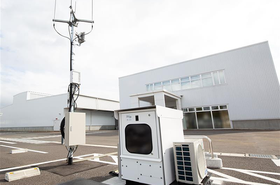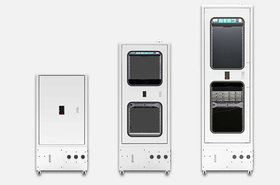As industries increasingly rely on data for their daily operations, the question of where companies should store their data is beginning to evolve as well. Today, high latency and bandwidth issues are significantly impacting organizations’ day-to-day functions as they move to the cloud.
The explosion of generated data by smart devices in homes, factories, vehicles, businesses, and even cities requires more substantial data-processing power than ever. Many organizations find that their industry requires a critical application that utilizes robust real-time analysis, but the reach of the cloud and centralized data centers is no longer effective.
The increasing need for real-time data is pushing organizations to Edge computing power. Keeping the processing nearby is critical to improving performance, and many companies are taking advantage of micro data centers (MDC) for their Edge computing needs.
Here is what you need to know about Edge computing and how data centers fuel the Edge computing revolution.
What is the difference between Edge computing and micro data centers?
People use the terms ‘Edge computing’ and ‘micro data center’ interchangeably. However, they are two separate concepts.
Edge computing refers to the distributed architecture where data processing happens closer to where it is generated, as opposed to in the cloud or a remote data center. MDCs, on the other hand, are the data center design that implements edge computing for organizations.
Edge computing enables businesses to move some of their compute resources and storage out of the traditional centralized data center and put it closer to the source of data itself. That allows companies to work where the data originates, such as a factory floor, retail store, or across a smart city.
Edge computing is increasingly the data of the future, with Gartner estimating that 75 percent of enterprise-generated data will be processed outside of the cloud or a traditional centralized data center by 2025. Micro data centers are where most of this will occur as it provides proximity to enable edge computing.
The top benefits of Edge computing and micro data centers
By using micro data centers, companies can harness the top benefits of Edge computing:
Security
Security is always a chief concern when it comes to sensitive data. Although devices need to be properly secured, it is a more secure architecture that reduces the chances of compromise.
The distributed architecture of Edge computing makes it more challenging to compromise over more traditional models. It’s also possible to cordon off one compromised area in the event of a breach without needing to shut down the entire operation.
Bandwidth
All networks have some limit on their bandwidth. Although it may be possible to increase bandwidth, it can be costly and doesn’t solve all problems. However, Edge computing significantly reduces bandwidth by lowering the overall volume of traffic moving to and from central servers.
IT eliminates unnecessary processing tasks and problematic bottlenecks. Users will benefit from a faster performance as a result.
Latency
Traditional networking requires data to be transmitted to centralizing servers to be processed. Then, the servers send instructions back if they need to respond. This can cause significant latency.
Edge computing through micro data centers delivers faster response time over more traditional models. Because it processes critical functions closer to the end-user, it has a significantly lower latency.
Industries that benefit most from edge computing and micro data centers
Companies that require real-time processing, such as those who use sensors, 5G, or IIoT, bandwidth limitation and latency can present a real problem. Edge computing, enabled by micro data centers, overcomes these challenges by reducing the length data has to travel.
Although most organizations could benefit from the use of Edge computing, it is essential for those industries that utilize smart devices and cutting-edge data, such as:
- Energy
- Manufacturing
- Retail
- Telco
- Healthcare
- Gaming
- Transportation
The rise of 5G makes it likely that many companies will need the processing resources of micro data centers. However, these industries face digital transformation and need the processing power to keep up with competitors.
More from Zella DC
-

Sponsored Traditional on-premises server rooms versus micro data centers: which is right for you?
For both traditional on-premise data center compute, as well as for edge, the micro data center provides a cost-effective and lower maintenance alternative, writes Zella DC's Angie Keeler
-

Zella DC delivers its first micro data center to Japan
Micro DC firm delivers outdoor hut to Internet Initiative Japan as part of new Edge solution IIJ will offer to customers
-

Zella DC launches micro data center-as-a-Service offering
Company says new Opex model offers more companies chance to deploy micro data centers

